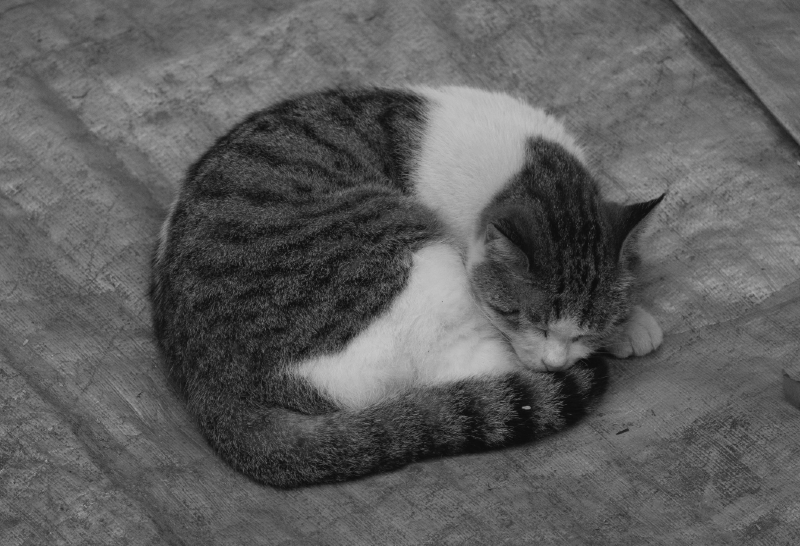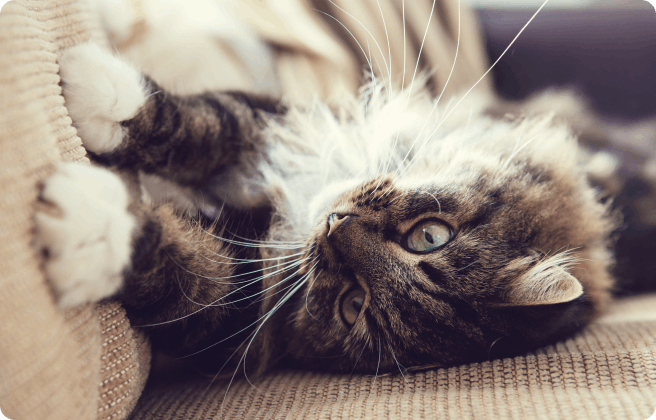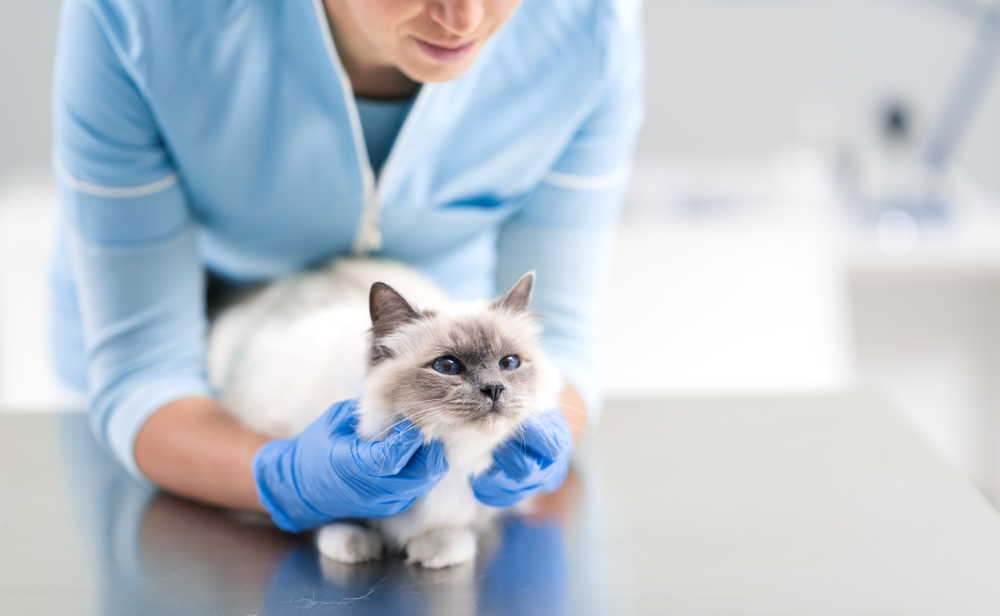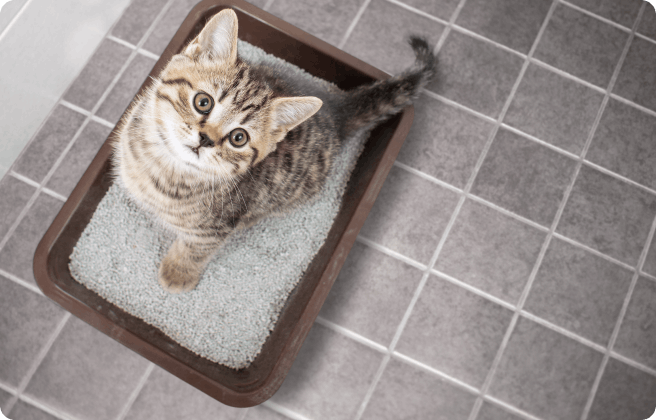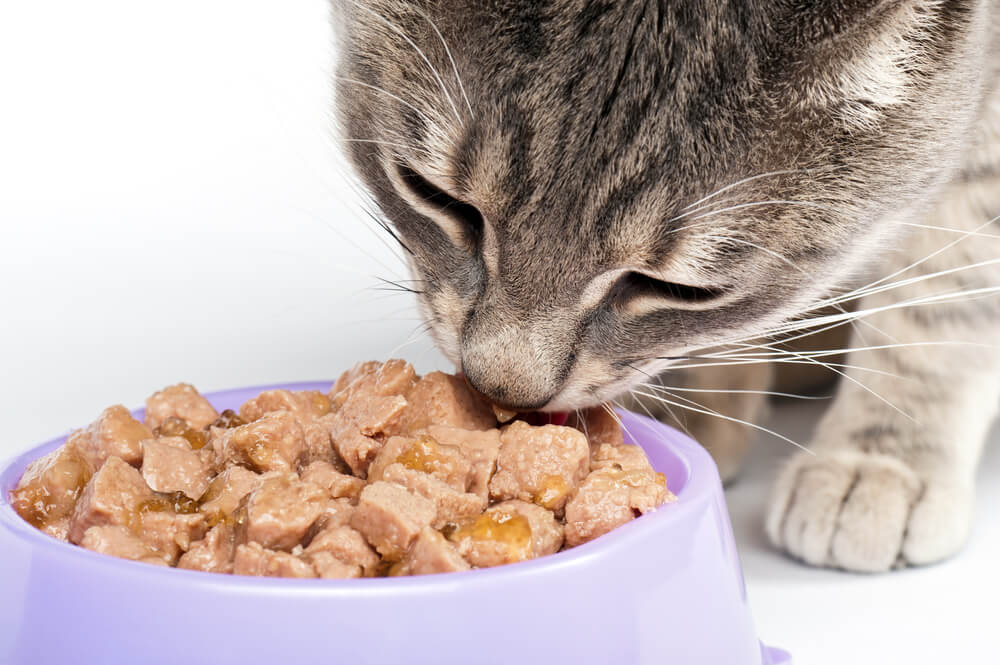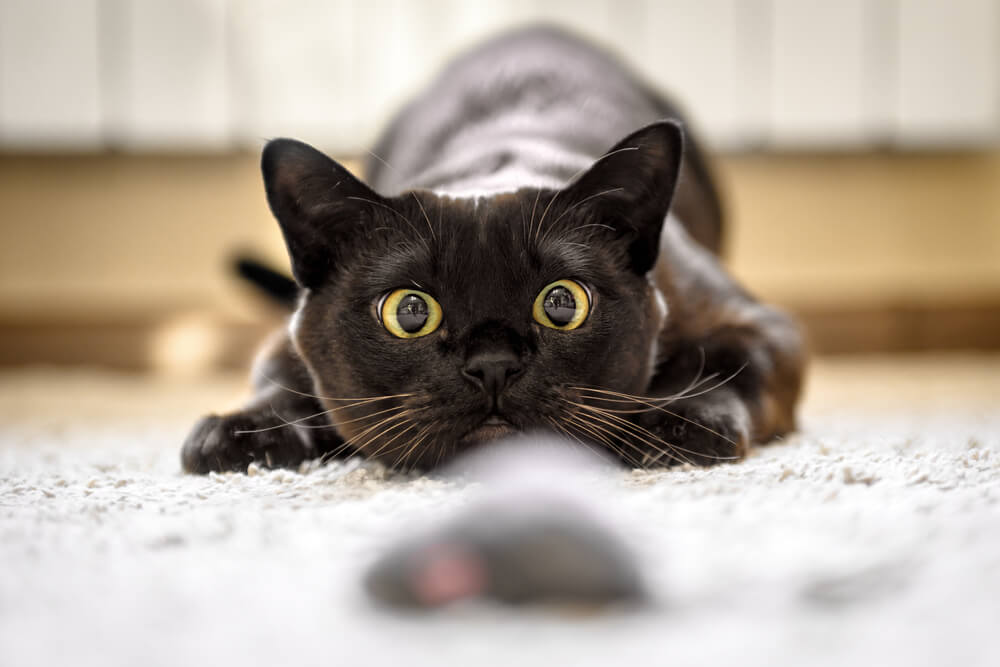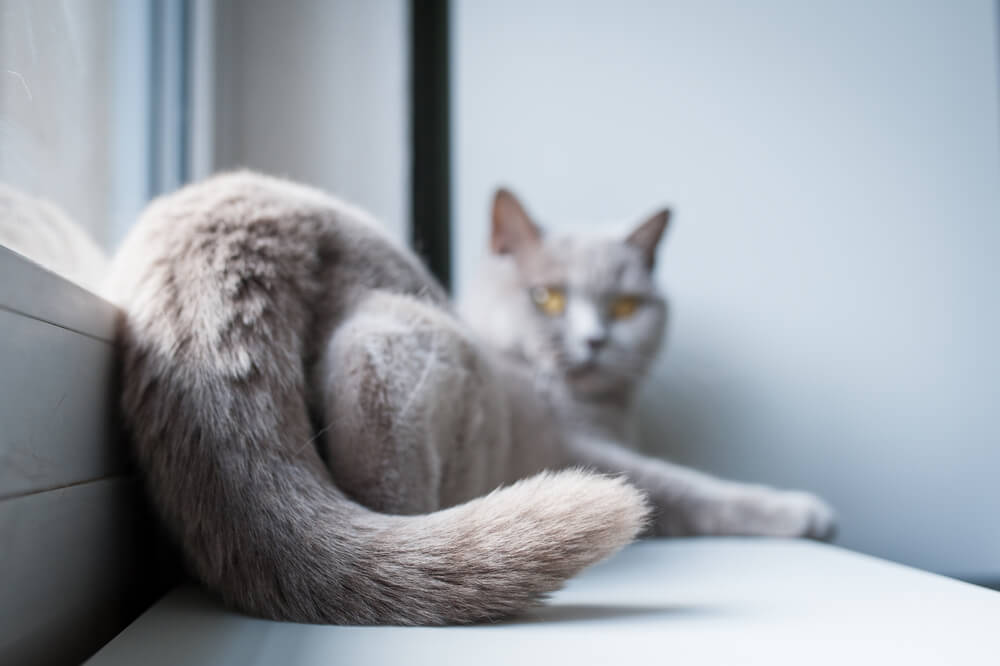
As a devoted cat parent, you’ll know a little about how your cat’s tail movements help indicate their current mood.
After all, it’s not possible to tell how they’re feeling from their facial expressions. And they can’t give voice to their concerns, worries or inner emotions — unless you count mewing when their stomach’s rumbling.
So showing how they’re feeling via their tail, combined with their overall body language, can be a useful indicator in terms of helping you determine their current state of mind, whether it’s, “Warning, keep your distance, I’m not feeling at all social” or, “Yes, I would like to chase that toy, please throw it for me.”
Studies have found that a cat’s ear positions also play a crucial role in helping decipher their mood, especially when combined with tail position when they interact with other cats.
Another reason to know more about what your cat’s tail movements mean is because it can help you deduce signs of illness or if your cat is feeling a little under the weather.
Here’s a guide to some of your cat’s tail movements and what they might mean.
Tail straight up
If your cat’s tail is pointing straight upwards it’s likely a sign they’re open to interacting with you. They’re feeling confident, playful and friendly, and they’re ready for a game, so it’s time to get out their favorite toy.
Cats often use this tail position to greet other cats in a friendly manner, and it’s also how kittens often greet their mothers. It’s sometimes used by younger cats, or cats lower down the hierarchy, when they approach older cats to signify they mean no harm.
Tail curves in a question mark
If your cat’s tail is pointing straight upwards with a curved or hooked end forming the shape of a question mark, it also means they’re happy and keen to interact. They are approaching non-aggressively, so it’s an invitation to pet and play with your feline companion.
Tail twitches
A slight twitching at the end of the tail can indicate a number of things. It could be that your cat is feeling playful, and is hunting or playing a game. They might be stalking something, or chasing a toy you’re holding.
Confusingly, a twitch can also mean they’re beginning to get irritable. If someone’s petting them when they no longer wish to be petted, the first indication that they’re becoming irritable is a twitch at the end of the tail. Take this as a fair warning that further aggression may be on the way.
Tail puffs up
You may be aware of the meaning of the fluffed-up, extra-wide tail: this is when your cat’s on high alert. They might be scared or startled, either way they’re in full fight-or-flight mode. It’s usually accompanied by raised fur all over their body, and an arched back with some hissing or spitting.
By adopting this position they’re trying to make themselves appear as big as possible to scare away any perceived threat, whether it’s a rival cat on their territory, a passing dog, new visitors in the home or a loud noise that’s unnerved them.
Usually, the best course of action is not to intervene, instead leaving them to calm down of their own accord. If you approach them when they’re in this mode of engagement, they might become aggressive towards you.
Tail slams into the ground
This is a warning — “Stop petting me or I will paw, bat, scratch or bite you!” If their tail is thrashing from side to side, twitching in random directions, or is thumping into the ground, you should back away from your cat and let them have time to themselves to cool off.
We all need space from time to time, but if they feel like they don’t want to be stroked, this is the clear signal they’re giving you to back off.
Tail is low to the ground
This is usually a sign of fear. Your cat may be anxious or scared of something, and so they exhibit this fear by lowering their tail or bringing it between their legs in an attempt to make themselves smaller and less noticeable.
This tail position could also be an indication your cat’s not feeling well, so keep an eye on them if they begin holding their tail close to the ground on a regular basis and look out for other signs of illness.
Tail wrapped around their body
Again, if your cat lies down with their tail wrapped around their body then it’s a sign they might be in pain, ill or scared.
At this point, you should ensure nothing in your cat’s surroundings is stressing them, and if they don’t relax and remain looking afraid with their tail curled around them, take them to the vet who can examine them to determine if they’re suffering from illness.
Tail wrapped around you
This is usually a friendly greeting, as your feline friend slaloms through your legs and wraps their tail around your calves.
Although in further evidence of their high intelligence, it’s usually because they know you’re about to feed them…
We uphold the highest editorial standards when creating the authoritative content pet parents rely on and trust.
Every piece of clinical content on the Cat Food Advisor is reviewed by our certified Veterinary Advisory Board, which consists of licensed veterinarians and medically certified specialists.
Our reviews are completely independent; we are not paid by any pet food company to promote their products favorably. We do not accept money, gifts, samples or other incentives in exchange for special consideration. For more information see our Disclaimer & Disclosure page.




